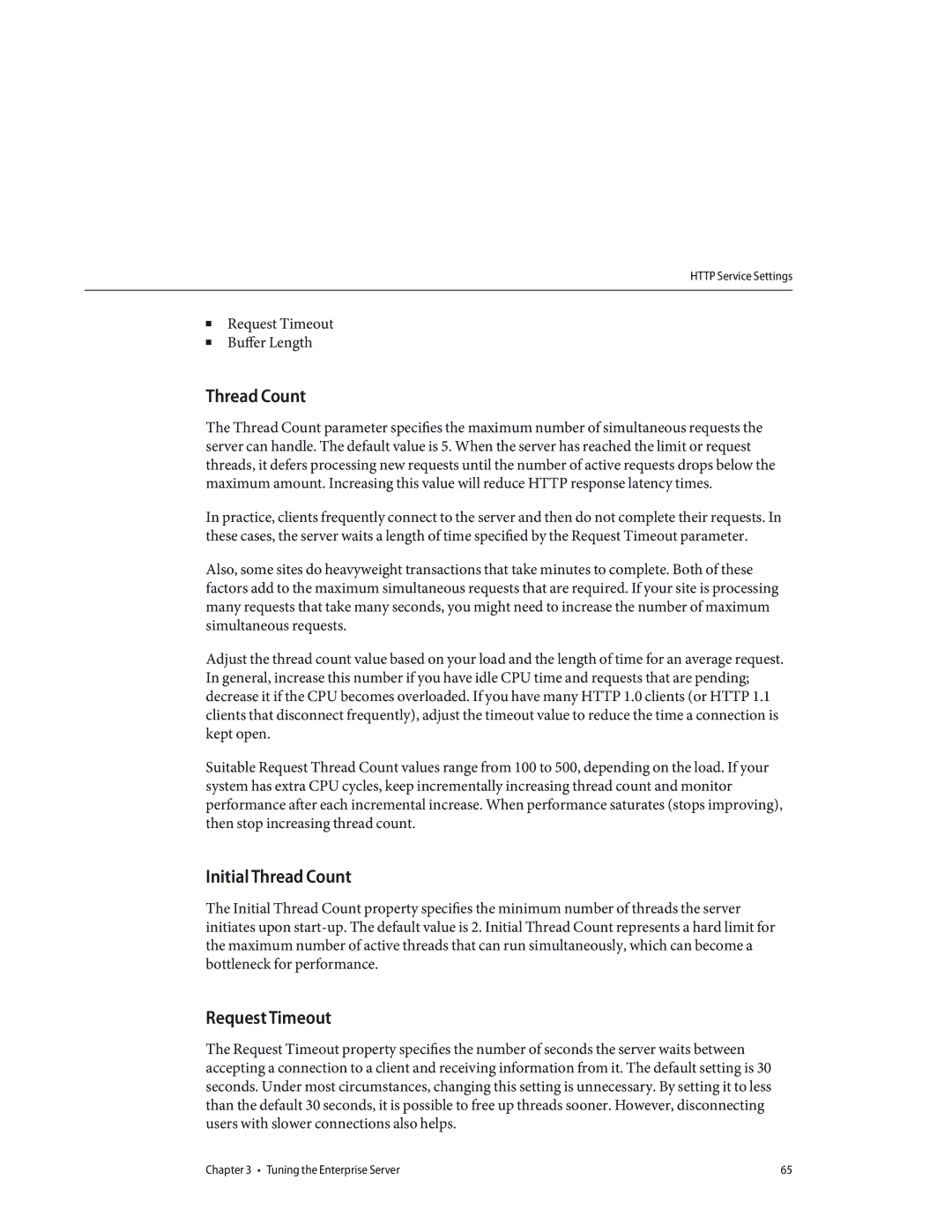HTTP Service Settings
■Request Timeout
■Buffer Length
Thread Count
The Thread Count parameter specifies the maximum number of simultaneous requests the server can handle. The default value is 5. When the server has reached the limit or request threads, it defers processing new requests until the number of active requests drops below the maximum amount. Increasing this value will reduce HTTP response latency times.
In practice, clients frequently connect to the server and then do not complete their requests. In these cases, the server waits a length of time specified by the Request Timeout parameter.
Also, some sites do heavyweight transactions that take minutes to complete. Both of these factors add to the maximum simultaneous requests that are required. If your site is processing many requests that take many seconds, you might need to increase the number of maximum simultaneous requests.
Adjust the thread count value based on your load and the length of time for an average request. In general, increase this number if you have idle CPU time and requests that are pending; decrease it if the CPU becomes overloaded. If you have many HTTP 1.0 clients (or HTTP 1.1 clients that disconnect frequently), adjust the timeout value to reduce the time a connection is kept open.
Suitable Request Thread Count values range from 100 to 500, depending on the load. If your system has extra CPU cycles, keep incrementally increasing thread count and monitor performance after each incremental increase. When performance saturates (stops improving), then stop increasing thread count.
Initial Thread Count
The Initial Thread Count property specifies the minimum number of threads the server initiates upon
Request Timeout
The Request Timeout property specifies the number of seconds the server waits between accepting a connection to a client and receiving information from it. The default setting is 30 seconds. Under most circumstances, changing this setting is unnecessary. By setting it to less than the default 30 seconds, it is possible to free up threads sooner. However, disconnecting users with slower connections also helps.
Chapter 3 • Tuning the Enterprise Server | 65 |
